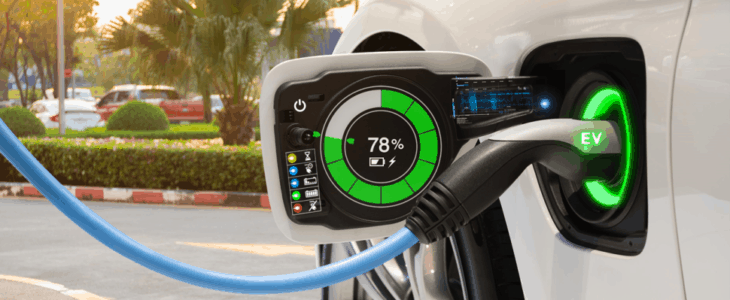
Bert Templeton – June 24, 2020
Bert Templeton – June 24, 2020
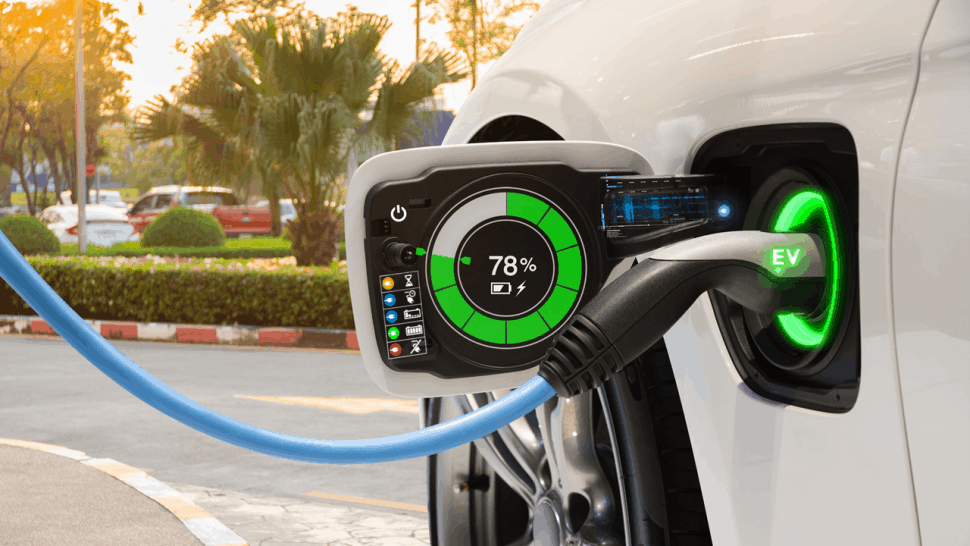
The growth of electronics, and along with it, semiconductor content in the automotive industry, continues to climb at a healthy rate, outpacing most other segments.
Analyst estimates indicate that the CAGR of automotive electronics will grow at nearly five and a half percent through 2021. That is roughly triple the rate of growth in computers.
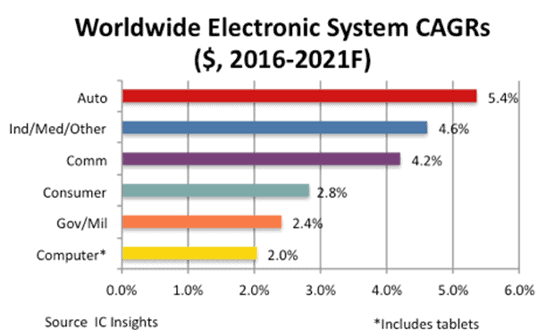
Enabling the growth of these electronics systems are the advances in semiconductor technology and applications. The worldwide semiconductor market for automotive is expected to be over $58 Billion. That is a 56% increase since 2017.
Semiconductor Growth in Automotive
![]()
The growth of semiconductors and electronics in the automotive industry isn’t new. Cars from the 1950s and 1960s had minimal electronics. Perhaps an AM radio in the early days. And they were Then adding AM/FM radios with power windows and a bit more in the 1960s and leading to 8 track tapes, cassettes, power sunroof, and other improvements like power seats in the 70s.
Significant increases in electronic content began in the 1980s with computerized engine management systems and electronics fuel injection. Safety items such as anti-lock brakes, airbags, predictive suspensions, and the communication of these systems with the engine management computer came about in the early part of the 21st century.
ADAS and other Market Drivers
In the past few decades and the next few as well, advancements in ADAS, RADAR, LIDAR, telematics, sophisticated infotainment systems, and green power trains have, and will continue to drive robust growth.
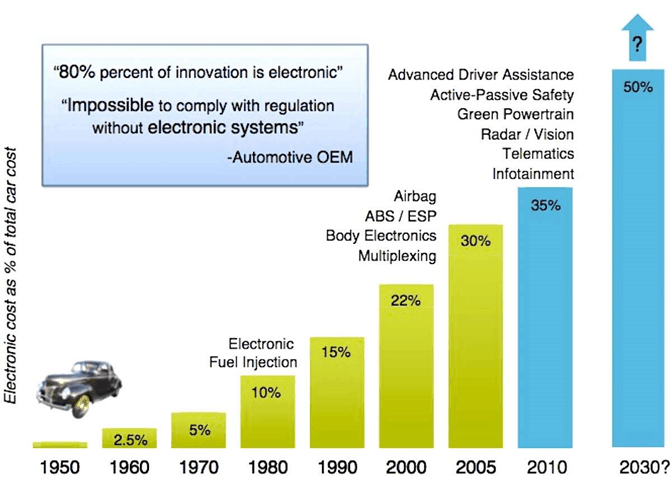
ADAS has been and will continue to be an application that will drive the increase of semiconductor content in the automotive industry. The realm of ADAS ranges from blind-spot monitors to active braking, lane departure assistance, and many more. As the cost points of these systems continue to get lower, the breadth of price points of vehicles having more ADAS increases dramatically. As an example, ABS was once only found in high-end luxury cars but is now standard in most automobiles and many motorcycles. The same is happening with new and future ADAS improvements.
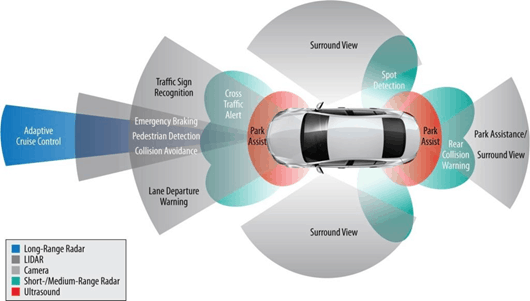
The Rise of Electric Cars
Another primary driver of the growth of semiconductor content are electric vehicles. The success of Tesla has proven there is a market for BEVs (Battery Electric Vehicles). Toyota has done well with Hybrid electric vehicles and continues to expand its growth. Volvo plans to have five new BEVs in their lineup by 2021, and over a million electrified Volvo vehicles on the road by 2025.
Most every other automotive manufacturer has plans to increase the number of electric vehicles on the road soon. Even Harley-Davidson has introduced an electric motorcycle, the LiveWire. EVs are a growth market.
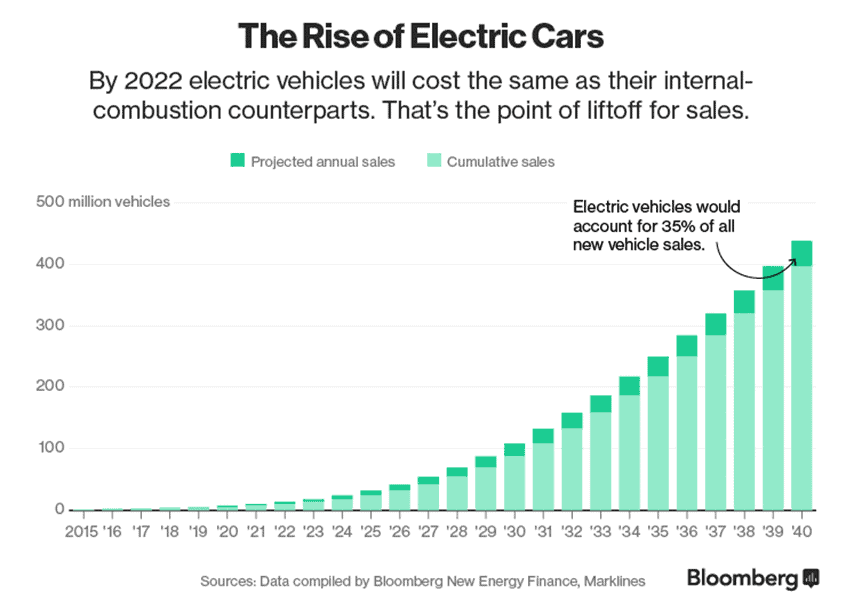
Most of the growth in semiconductors comes in applications such as safety and drive train, battery management systems to ADAS, infotainment, and other applications that demand high reliability.
Burn-in of semiconductors for Automotive Applications
To achieve this goal of reliability, many semi manufacturers and customers demand that their products be burned-in. Traditional burn-in systems, targeted at lower, 5V applications will not suffice. Newer solutions, capable of handling high voltage products are needed. For example, Porsches’ new EV charging system operates at 800V This is double that of most other previous EV charging voltages. At burn-in, these devices require special consideration in the design of their burn-in boards as well as specialized burn-in sockets that can meet the requirements of high voltage.
For most manufacturers, this technology is not yet mature enough to assume reliability. The battery management and other systems required for these high voltages must be adequately tested. Because of this, the burn-in of semiconductors for automotive applications is likely to continue and expected to increase.
In the future, it is likely that to achieve quicker recharge times, even higher voltages will be needed. And the semiconductor equipment industry must be ready to meet those requirements.
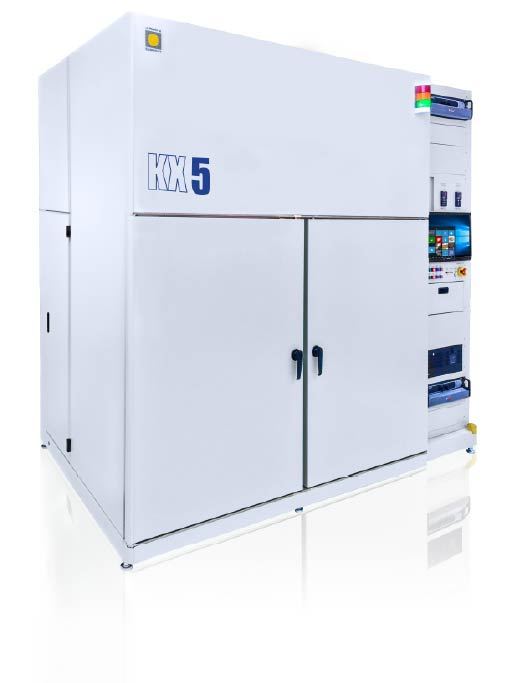
Bert Templeton is the Director of Field Operations for KES Systems. In that role, he supports sales, marketing, and engineering operations for capital equipment and PCB, such as burn-in boards, ATE test boards, and others.
Before coming to KES, Mr. Templeton has several decades of experience in the semiconductor and automotive industries, with engineering and management roles at AT&T, Ford, Schlumberger, and Agilent and has worked in 5 countries across North America, Europe, and Asia.
Related Articles:
An Introduction to Semiconductor Burn-in
!EMPTY!
2 comments on “Growth of Automotive Semiconductors and their Burn-in requirements”
Ignacio
July 14, 2020 at 1:56 amVery good article. High voltage burn in boards are causing a lot of problems in manufacturing. Especially because of the sockets
bert.qts
July 14, 2020 at 7:56 pmThanks Ignacio. Our Transformer line of sockets for high voltage applications is designed to minimize many of these problems. You can go to this page to learn more about them: https://www.kessystemsinc.com/solutions/kes-transformer-high-voltage-burn-in-sockets/
If you still have questions, please contact us via our contact or about us pages.
Comments are closed.